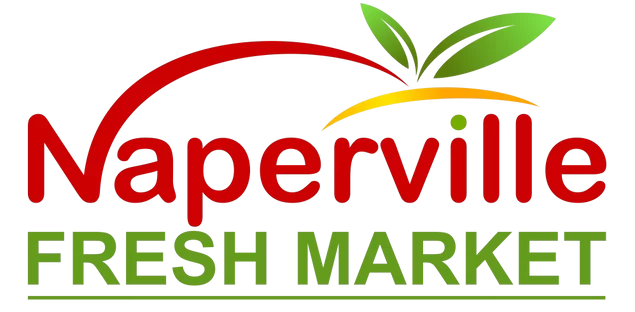International expansion rewards Illinois companies that treat research as a system, not a side task. A structured playbook clarifies where to look for signals, how to test assumptions quickly, and when to invest deeper. Whether you lead a manufacturer in Elgin, a food brand in Aurora, or a software startup in Champaign, the right research cadence can uncover customer needs, map channels, and de-risk the first shipment. As you begin, consider curating examples and competitive assortments—sometimes as simple as reviewing a targeted catalog like keyword—to inspire hypotheses about positioning and demand.
Set Research Objectives and Hypotheses
Define what decisions your research must enable: choosing three candidate countries, selecting a channel, validating price points, or tailoring a value proposition. Write lean hypotheses covering customer segment, problem severity, willingness to pay, and likely objections. Tie each hypothesis to a test method and a time box so you maintain tempo.
- Objective: Select top two markets for a 12-month pilot.
- Hypothesis: Industrial buyers in Germany prioritize uptime over price.
- Test: 15 interviews, distributor discovery calls, and a pilot quote request form.
- Time box: Four weeks, with a go/no-go review at week five.
Gather Secondary Research Efficiently
Start with macro data to eliminate low-fit markets. Review trade flows, import trends, and regulatory barriers. Analyze competitor footprints to infer traction and white space. Collect cultural insights that may shift your messaging. Summarize findings in a one-page market brief per country, scoring size, growth, ease, and strategic fit so stakeholders can compare at a glance.
Primary Research: Talk to the Market
Primary research turns desk insights into decision-ready direction. Aim for a small but representative sample: end customers, channel partners, and technical or regulatory advisors. Write a conversational script that explores the job-to-be-done, how buyers evaluate options, the buying committee, and switching barriers.
- Customer interviews: 30–45 minutes, focused on problems and workflows, not pitching.
- Partner interviews: probe margin expectations, territory coverage, after-sales capacity, and onboarding needs.
- Regulatory consults: clarify certifications, labeling, data privacy, or import restrictions.
Log each interview in a simple template: who they are, what they do, key quotes, and implications. Tag recurring themes and quantify how often they appear. This makes insights auditable and sharable across your Illinois team.
Design Lightweight Experiments
Use experiments to validate demand and refine messaging. Launch a localized landing page with a value proposition tailored to the target segment. Run small ad campaigns to test keywords and offers. Use a sample request or quote form to measure intent beyond clicks. Pair digital signals with outreach to high-intent leads and track conversion to meetings and pilots.
- A/B test headlines that articulate outcomes, not product features.
- Offer a webinar or technical spec sheet to qualify interest.
- Instrument analytics to see where visitors drop off and why.
Market Sizing and Prioritization
Estimate TAM, SAM, and SOM with transparent assumptions. Use top-down (industry reports) and bottom-up (units per account times target accounts) methods and reconcile differences. Your prioritization should reflect not only size but also reachability: partner availability, digital discoverability, and regulatory friction.
Customer Segmentation and Personas
Develop personas grounded in research: roles, pains, desired outcomes, buying process, and triggers. For B2B, map the buying committee—economic, technical, and user sponsors. For consumer products, segment by mission (e.g., premium, convenience, health) and occasions (weekday vs. weekend use). Build messaging pillars for each persona and test them with call snippets and landing page copy.
Channel and Competitor Mapping
Diagram the path to purchase: direct e-commerce, marketplace, distributor, retailer, or integrator. Identify gatekeepers and incentives; note which content helps each step. Create a competitive matrix focused on benefits and risks rather than feature checklists. Interview channel partners about which brands actually move and why.
Product Fit and Localization Requirements
Inventory what must change for international success: sizes, packaging, documentation, voltage or power standards, user interface languages, and warranty norms. Estimate effort and sequence changes into your roadmap. Early on, avoid deep reengineering; instead, make high-impact, low-effort tweaks validated by interview feedback.
Evidence-Based Pricing
Price tests should combine willingness-to-pay research with real quotes. Ask prospects to rank value drivers, then present anchored price scenarios. Track acceptance rates, discount requests, and margin by channel. Adjust for duties, shipping, and service costs, and ensure terms align with local expectations on delivery and support.
Mid-Project Review and Pivot Rules
At the midpoint of your research sprint, pause to decide: double down, pivot, or stop. Look for signal strength: clear problem/solution alignment, partner enthusiasm backed by action, and early purchase intent. If signal is weak, iterate hypotheses or switch markets. Keep an eye on assortment resonance by checking curated examples like keyword to recalibrate positioning and feature emphasis without overfitting to a single competitor.
Operational Readiness Checks
Translate research into operational plans: lead time, safety stock, packaging tests, after-sales service, and returns. Confirm the customs classification and required documentation for sample shipments. Align finance on exposure limits, invoice processes, and currency handling. Draft a partner onboarding kit and a customer-facing FAQ in the target language.
From Insights to Action: The Go/No-Go
Summarize evidence in a decision memo: objectives, methods, key findings, risks, and a 90-day pilot plan with milestones. Secure executive alignment and assign owners for sales, marketing, operations, and compliance. Enter the market with a small, well-instrumented offer and a clear success definition.
Frequently Asked Questions
Q: How many interviews are enough?
A: Aim for 15–20 high-quality conversations per segment. Stop when you hear consistent themes and no new objections surface.
Q: What if competitors already dominate the market?
A: Look for underserved niches, alternative channels, or differentiated outcomes. Your research should reveal pockets where your advantage resonates.
Q: Can I rely on online analytics alone?
A: No. Combine digital signals with human conversations. Clicks show interest; interviews reveal intent, objections, and context.
Q: How do I avoid bias in interviews?
A: Ask open questions, avoid leading language, and record calls (with consent). Summarize verbatim quotes before adding interpretation.
Q: What tools do I need to start?
A: A shared spreadsheet, a call scheduler, a simple landing page builder, and basic analytics. Add complexity later as scale demands.
Q: How long should a research sprint last?
A: Four to eight weeks is typical for an initial pass that informs a pilot. Heavily regulated products may need longer.
Q: How do I budget for research?
A: Budget time before dollars. Most early tasks cost effort more than cash. Invest money for translation, ads, and expert consults as signal strengthens.
Q: What metrics confirm product-market fit?
A: High interview enthusiasm backed by next steps, pilot conversions, repeat orders, and partner investments in your line.
Move From Insight to Impact
A great research playbook converts ambiguity into traction. Define decisions, run lean tests, and commit to action when evidence is clear. As you finalize your pilot plans and assortment choices, equip your team with accessible references; even reviewing a practical selection like keyword can sharpen messaging and category strategy. Set your first market sprint today, assign owners, and turn research into revenue.




